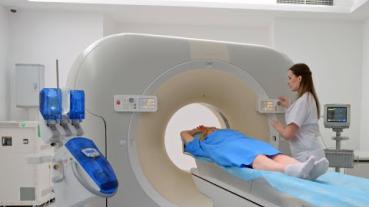Recent changes to cannabis laws have been praised by some as a breath of fresh air. Researchers, however, need time to catch their breath as the constantly evolving science unfolds.
In 1937, cannabis was criminalized in the U.S. as Congress passed the Marijuana Tax Act, and it was labeled a “poison” as early as 1906 under the Pure Food and Drug Act. As we start 2020, though, legalization and acceptance of cannabis — which is also known as marijuana or weed, and a host of slang terms — is quickly gaining momentum for both its recreational and medical use.
More than half of the states in the U.S. have now legalized cannabis for medical purposes, and 11 states plus the District of Columbia have legalized it for recreational use. Despite increased acceptance of marijuana, there are health concerns to take into account, especially when weed is inhaled.
There are signs that inhaling marijuana may have some negative health implications, but scientists need time to dive into the matter now that legalization is making research easier. Let’s take a closer look at lung health and marijuana facts.
What is marijuana?
Marijuana is a psychotropic drug — drugs that affect emotions, behavior and perception — derived from the hemp plant, or Cannabis sativa. Roughly 30 minutes to one hour after ingesting marijuana, people may start to feel changes in mood, impaired body movement and memory, and an altered sense of time.
Medical marijuana is used in a variety of ways, including control of chronic pain associated with diseases such as multiple sclerosis and fibromyalgia, as a muscle relaxant to lesson tremors in Parkinson’s disease, and as a way to manage conditions that cause nausea and weight loss. It also holds promise for many other diseases, such as PTSD and other mental health disorders, and irritable bowel syndrome.
Cannabis, though, can increase heart rate, cause intense nausea and vomiting for long-term users, and birth and child development problems when mothers use it during pregnancy. Marijuana may also worsen symptoms of schizophrenia, and has been linked to depression and anxiety among teenage users.
Though people can use marijuana by mixing it with food, the most popular way is to inhale it with pipes or in cigarette form, and many people are now using vaporizers to inhale the active chemical. That’s when marijuana’s effects on lungs come into play.
What are the side effects of smoking weed?
Marijuana side effects include the following:
- Smoker’s cough
- Chest tightness
- Shortness of breath
- Throat inflammation
- Wheezing
What are the long-term effects of weed on my respiratory system?
Cannabis smoke contains many of the same harmful chemicals as tobacco smoke, so it has the potential to cause similar harm. Research, however, has some catching up to do. Scientists should be able to get a better hold on the long-term effects of cannabis smoke now that legalization is making it easier to study.
“Smoking marijuana probably does cause a lot of injury, but the studies aren't very conclusive yet,” says Brady Scott, MSc, RRT-ACCS, AE-C, FAARC, FCCP, an associate professor of respiratory care at Rush University. “That said, more research is being conducted to give us more clarity. For example, a recent study in the European Respiratory Journal showed that smoking marijuana accelerates lung function decline in tobacco smokers in comparison to those who only smoke tobacco.
“What we recommend is people should not inhale anything into their lungs. The lungs should have air in them — not smoke.”
There is some evidence that suggests marijuana smoke can lead to the following conditions:
- Bullae (permanent, air-filled spaces within the lungs)
- Chronic bronchitis
- Chronic cough
- Chronic obstructive pulmonary disease, or COPD (includes hyperinflated lungs and emphysema)
- Decrease in respiratory system immune response
- Respiratory infections
Some studies also point to the possibility that smoking marijuana can lead to infectious disease transmission. Some people who smoke marijuana might share pipes or cigarettes, which can lead to the development of lung infections as molds are transmitted from person to person. That may include Legionnaires’ disease, which is a severe type of pneumonia.
Does smoking marijuana increase my risk of getting lung cancer?
Researchers still don’t know for certain if smoking marijuana increases the risk of developing lung cancer, but there are signs that point to a potential link.
The carcinogens in tobacco smoke are also in marijuana smoke, and some of them are found in higher amounts. In addition, marijuana smokers generally inhale smoke deeply and hold it longer than cigarette smokers hold tobacco smoke. That increases the amount of unhealthy chemicals that reach the lungs.
“The research related to lung cancer can be tricky,” Scott says. “Many marijuana smokers are also cigarette smokers, and some may smoke only occasionally while most cigarette smokers have a daily habit. That makes it hard for researchers to understand the impact of each variable.”
What is the difference between vaping and smoking marijuana?
While smokers inhale smoke from the entire dried cannabis plant, vapers use a device (e-cigarettes and vape pens) to heat a liquid of concentrated marijuana, and sometimes flavorings and other chemicals, to form vapors that are inhaled.
Theoretically, vapers should be exposed to fewer toxic chemicals than smokers, but there has been a recent outbreak of lung illnesses and deaths linked to vaping. The Centers for Disease Control and Prevention, or CDC, has confirmed 57 deaths caused by EVALI (electronic cigarette, or vaping, product use associated lung injury) as of January 2020.
“Vaping is clearly a public health concern right now,” Scott says. “It’s particularly alarming because it's not that these folks are slowly declining in lung function over time like we generally see with smoking cigarettes. These are relatively younger folks who are dying from issues that progress quickly.”
A December 2019 study featured in the American Journal of Preventive Medicine found that e-cigarette use significantly increases the risk of developing chronic lung diseases, and a 2017 study published in Environmental Research showed cancer-causing elements can be released when batteries in e-cigarettes heat the liquid that creates the vapor. In November 2019, the American Medical Association called for a ban on vaping.
The CDC believes it may have found a potential culprit: vitamin E acetate, an additive found in cannabis vapes. More studies are needed, however.
“It certainly doesn’t seem like vaping is a safer way to consume marijuana,” Scott says. “I wouldn't recommend smoking it. I wouldn't recommend vaping it. If somebody wants to use medical marijuana — and there seems to be good evidence that it’s helpful for certain diseases — then we really need to study the best way to administer it so we're not causing harm to one part of the body in an effort to help another.”
Learn more about respiratory care at Rush University.




